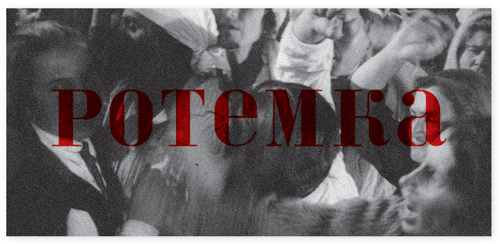
Du bist mein Spiegel / You are my mirror
Girls and Boys-Ausstellung in zwei Teilen.
Part 1 – Girls
21. 09 - 18. 10. 2013
Vernissage: 21. 09. 11 - 21.00 Uhr
Zum Rundgang (Gallery Tour opening)
11-20 h (Sa) + (So) 11-18 h
Curated by Veronika Somnitz
Lana Čmajčanin, Charlotte Eifler, Judith Miriam Escherlor, Kerstin Flake, Molina Ghosh, Grit Hachmeister, Henriette Grahnert, Nela Hasanbegović, Katrin Heichel, Franziska Holstein, Annegret Hornik, Inga Kerber, Yvette Kießling, Justyna Koeke, Uta Koslik, Kathrin Landa, Corinne von Lebusa, Carina Linge, Bea Meyer, Martina Munse, Michiko Nakatani, Juliana Ortíz, Inka Perl, Claudia Rößger, Kerstin Schiefner, Sophie von Stillfried, Dikla Stern, Kathrin Thiele, VIP
ENGLISH : The aspects of mirroring which the women artists explore are as multifaceted in their artistic expression as the different forms of mirroring described in the natural sciences, philosophy or psychology. Besides the straightforward salutatory address of a You, the recognition of the Self in the You, concrete acts of holding up a mirror, and the game of direct-indirect representation of your vis-à-vis, or of the inner or outer self – sometimes cheeky and coquettish, sometimes hard, sometimes gentle, conflicting with the other, allegorical or imitating, analytical or intuitional – there are also broader, further-reaching interpretations of and perspectives on just what can be understood as an aspect of reflection. Among these are spatial conditions as a mirror of the soul, as well as summaries of societal events condensed in the abstract as echoes of and reactions to the personal environment. Defined on an even wider basis, the topic could also be the discussion between the woman artist and the canvas as a communication partner, or what parts or aspects of herself the artist’s work with other materials will leave or reflect in these media.
If nothing else, the various shards of statements and sentiments form a broad picture of the many individual parts, emotions and intellectual approaches which can be concentrated in one individual.
And this leads us directly to the unmentioned but omnipresent question: Does the exhibition concern the individual parts of a person or more specifically the parts of a female person? Is the exhibition about typical female positions? – Of course, since the exhibition is only showing the work of woman artists. – Are these typical female points of view and approaches? This is what each individual needs to discover and it will be interesting to see how the men artists treat the subject in the second part of the dialogue between man and woman.
Text: Veronika Somnitz, curator
GERMAN : Die Spiegelaspekte, die die Künstlerinnen in der Ausstellung aufgreifen werden, fallen in ihrem künstlerischen Ausdruck ebenso facettenreich aus wie die verschiedenen Arten von Spiegelungen, die unter anderem in der Naturwissenschaft, in der Philosophie oder Psychologie beschrieben werden. Neben der direkten Ansprache eines Du, dem Wiedererkennen des Ich im Du, konkreten Akten des Spiegel-Vorhaltens und dem Spiel mit der direkt-indirekten Darstellung eines Gegenübers oder des inneren oder äußeren Selbst – mal frech und kokett, mal hart, mal zart, sich am anderen reibend, allegorisch oder imitierend, analytisch oder intuitiv – finden sich auch weitläufigere Auslegungen und Betrachtungsweisen zu dem wieder, was als Spiegelaspekt verstanden werden kann. Raumzustände als Spiegel der Seele zählen ebenso dazu wie abstrakt verdichtete Zusammenfassungen gesellschaftlicher Ereignisse als Resonanzen und Rückkopplungen des persönlichen Umfelds. Noch weiter gegriffen kann das Thema auch die Auseinandersetzung der Künstlerin mit der Leinwand als Kommunikationspartner implizieren oder was die Arbeit der Künstlerin mit anderen Materialien von ihr in diesen Medien hinterlässt und reflektiert.
Die vielen Spiegelstückchen an Behauptungen und Ansichten bilden nicht zuletzt ein großes Ganzes dessen, was sich an einzelnen Anteilen, Gefühlsaspekten und Denkansätzen in einer einzigen Person konzentrieren kann.
Und jetzt kommen wir zum rosa Elefanten im Raum: Handelt es sich um die Anteile einer Person oder spezifisch um die Anteile einer weiblichen Person? Handelt es sich dabei um typisch weibliche Positionen? - Selbstverständlich, schließlich werden ausschließlich Arbeiten von Frauen gezeigt. - Handelt es sich dabei um typisch weibliche Betrachtungs- und Herangehensweisen? Dies gilt es für jeden Einzelnen zu entdecken und man darf gespannt bleiben, wie die männlichen Künstler im zweiten Teil des Mann-Frau-Dialogs das Thema erfassen werden.
Text: Veronika Somnitz, Kuratorin
Potemka Contemporary Art . Aurelienstraße 41 . 04177 Leipzig . Tel.: 0172 - 346 06 57 . post@potemka.de . open: Tue - Fri: 14.00 - 18.00 . Sat. 11.00 - 16.00